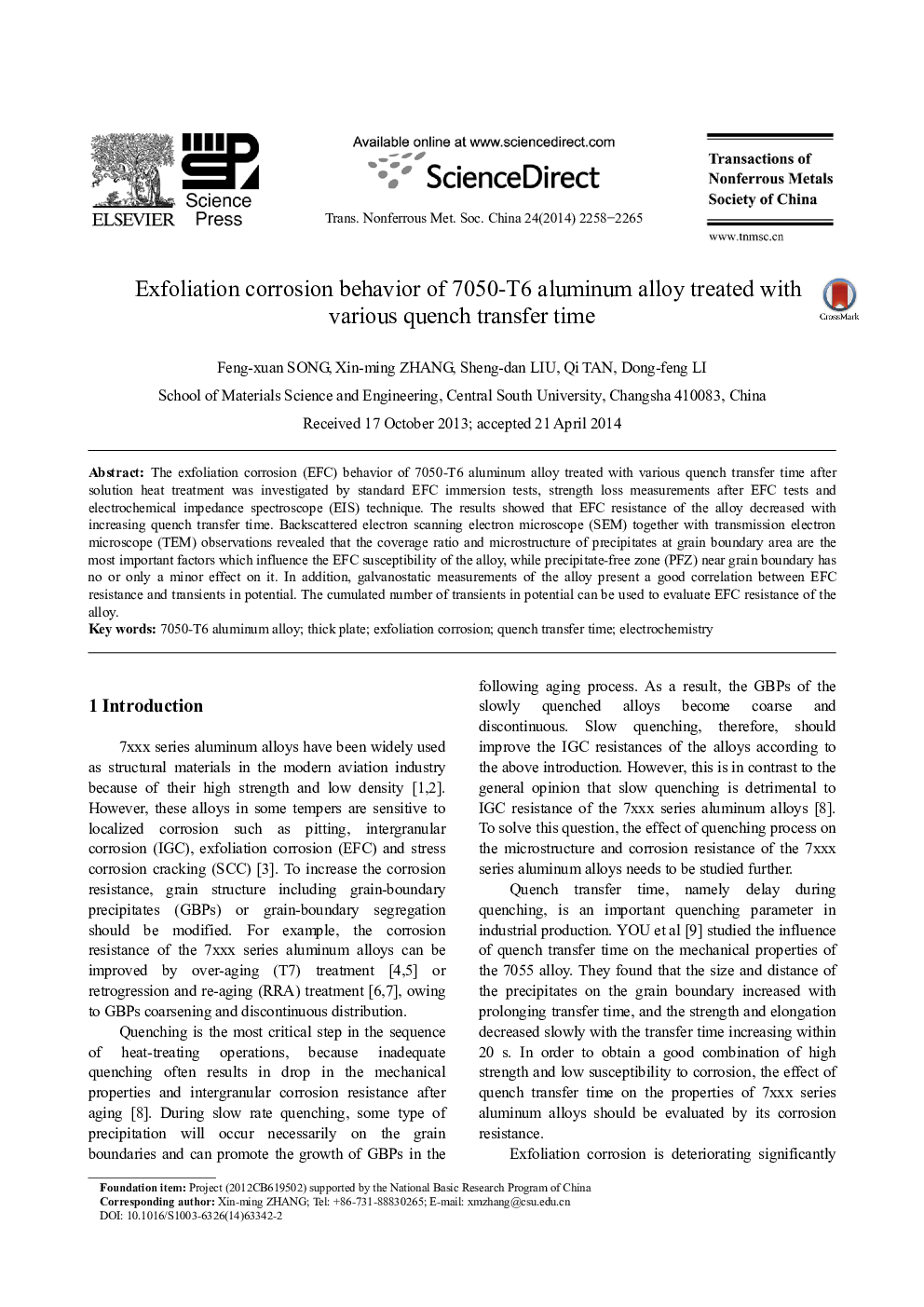| Article ID | Journal | Published Year | Pages | File Type |
|---|---|---|---|---|
| 1637349 | Transactions of Nonferrous Metals Society of China | 2014 | 8 Pages |
Abstract
The exfoliation corrosion (EFC) behavior of 7050-T6 aluminum alloy treated with various quench transfer time after solution heat treatment was investigated by standard EFC immersion tests, strength loss measurements after EFC tests and electrochemical impedance spectroscope (EIS) technique. The results showed that EFC resistance of the alloy decreased with increasing quench transfer time. Backscattered electron scanning electron microscope (SEM) together with transmission electron microscope (TEM) observations revealed that the coverage ratio and microstructure of precipitates at grain boundary area are the most important factors which influence the EFC susceptibility of the alloy, while precipitate-free zone (PFZ) near grain boundary has no or only a minor effect on it. In addition, galvanostatic measurements of the alloy present a good correlation between EFC resistance and transients in potential. The cumulated number of transients in potential can be used to evaluate EFC resistance of the alloy.
Related Topics
Physical Sciences and Engineering
Materials Science
Metals and Alloys
Authors
Feng-xuan SONG, Xin-ming ZHANG, Sheng-dan LIU, Qi TAN, Dong-feng LI,
